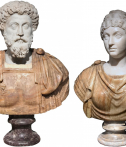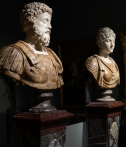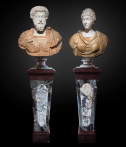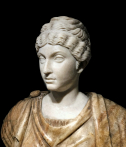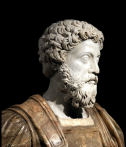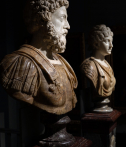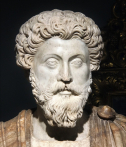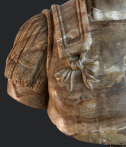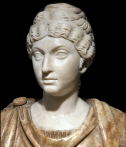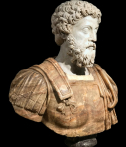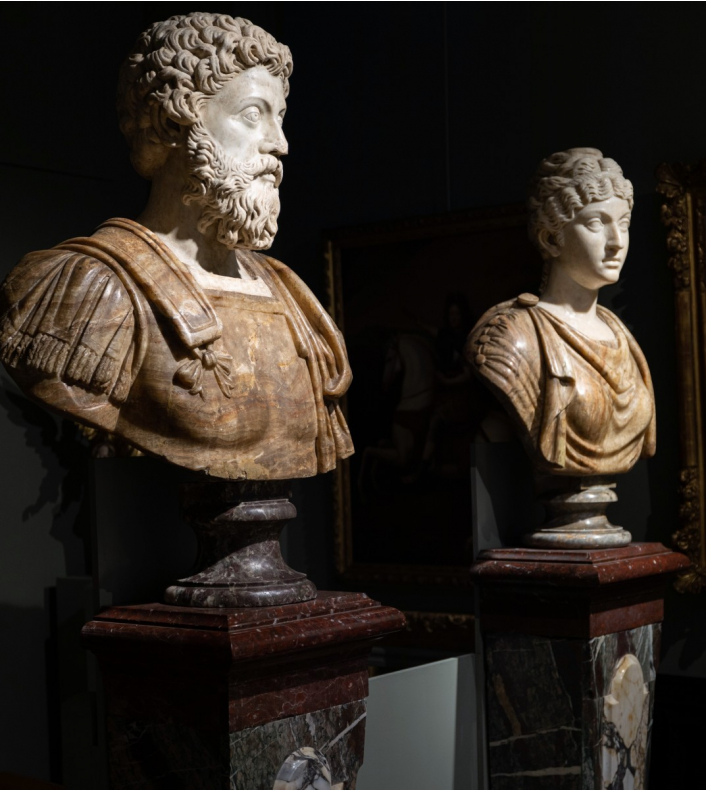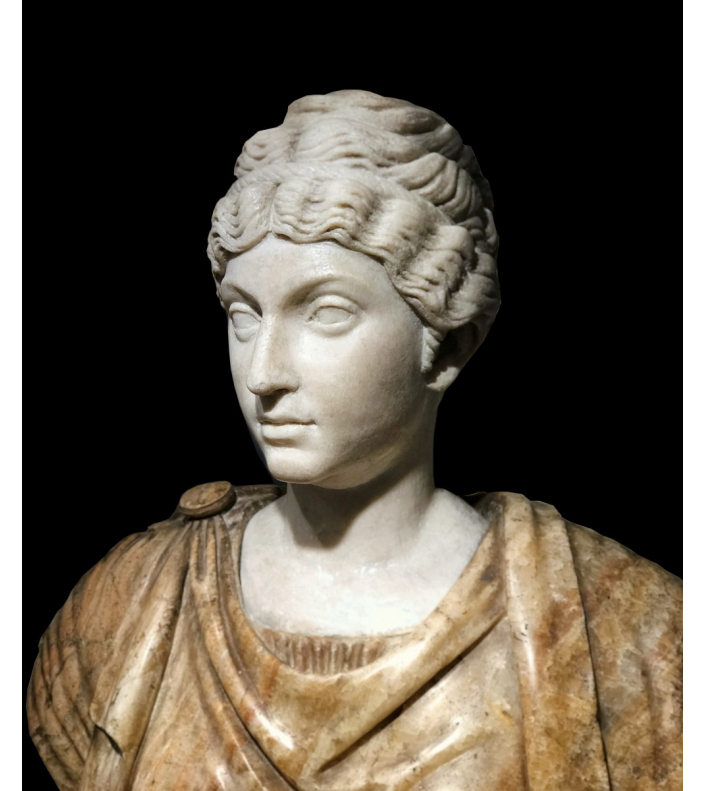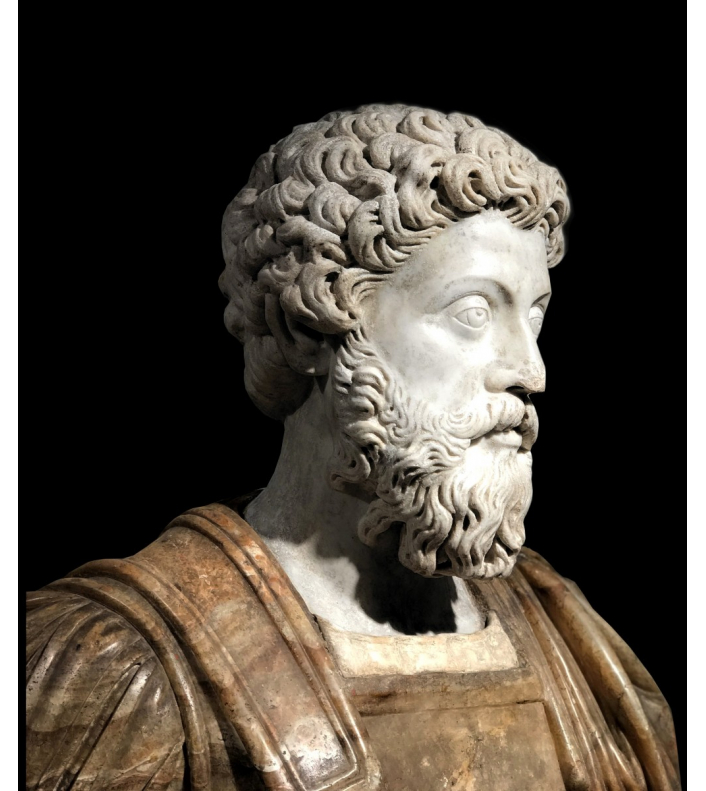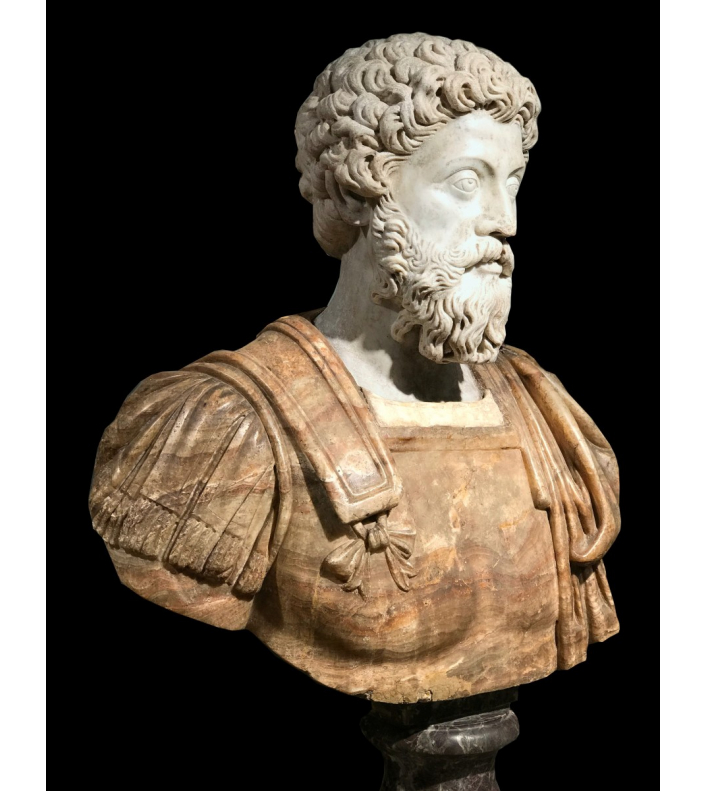A Roman 17th c. pair of marble and alabaster busts
Exceptional pair of busts featuring Marcus Aurelius, the Roman Emperor and Faustina the Younger, Roman Empress, his wife.
Made in white carrara marble and banded alabaster, size larger than life, our pair of busts impose by their expressive force and sculptural majesty.
Created in Rome in 17th century, they bear witness to the great enthusiasm for antique sculpture.
This kind of busts, associating the white marble of the faces with the colored marble of the torsos, served to adorn the galleries of aristocratic palaces, evoking the glorious Roman past, to which many Roman, Italian and European families claimed to be attached.
The busts of ancient rulers were obviously the most preferred, among which Marcus Aurelius, for his historical notoriety, was one of the most coveted.
The bust of Marcus Aurelius that we present is executed after ancient busts dating from 170-180 AD and belongs to type 4 or Emperors of the Capitol, type 38, corresponding to the end of his reign, where maturity causes a transition from his function as the emperor to his position as a philosopher.
Oval face crowned by a voluminous mass of curly hair, framed by a generous beard and a neat mustache, Marc Aurèle, in accordance with his status is dressed in a breastplate, leather straps covering his right shoulder, the coat stapled by a domed brooch on his left shoulder falling in wide folds. A serene and majestic look, its imposing appearance exudes all the power of an experienced ruler.
During 20 years of reign, Marcus Aurelius was constantly portrayed, the sculptors reflecting with each new work the advancing age of the emperor. The interest of his latest portraits and that they represent the emperor in all its psychological dimension, rendering it more human, and revealing the man behind the status of emperor. This psychological depth is reflected in his face projecting maturity, serenity and wisdom, the feeling accentuated by his long beard, in the tradition associated with the Greek philosophers. Nevertheless he wears a military breastplate and cape, which express his active role as commander-in-chief. He spent many years during his reign campaigning in Central Europe to defend the Danube border from barbarian invaders. It was during these campaigns that he wrote parts of the so-called Meditations, a personal journal of his innermost thoughts, influenced by the teachings of the Greek philosopher Epictetus.
The bust of Faustina Minor that we present corresponds to type 3 designed around 150 AD.
Slightly turned to her right, wearing a tunic buttoned over the shoulder and a broadly draped coat covering the left shoulder and leaving the right shoulder uncovered, attached by a flat brooch. she sports an intricate hairstyle. Her wavy hair is parted in the center, brushed to reveal the ears and tied into a massive bun of interlocking braids, small curls escaping down the nape of the neck and down the front of the ears
This iconography, in particular the arrangement of the hairstyle, also appears on coins minted between 147 and 161 AD.
Faustina the Younger benefited from 9 distinct types of iconography, each new type having been created after each new birth given.
Rome, 17th century.
Good state of conservation.
Bust of Marcus Aurelius: Height: 90 cm; Width: 70 cm
Bust of Faustina Minor: Height: 84 cm; Width: 61 cm
Presented on slightly flared Louis XIV style piedestals. The base and top in cherry red marble, the body in large blend campan with a molded part in peach blossom.
Dimensions: H. 130 cm - L. 44 cm - P. 32 cm


